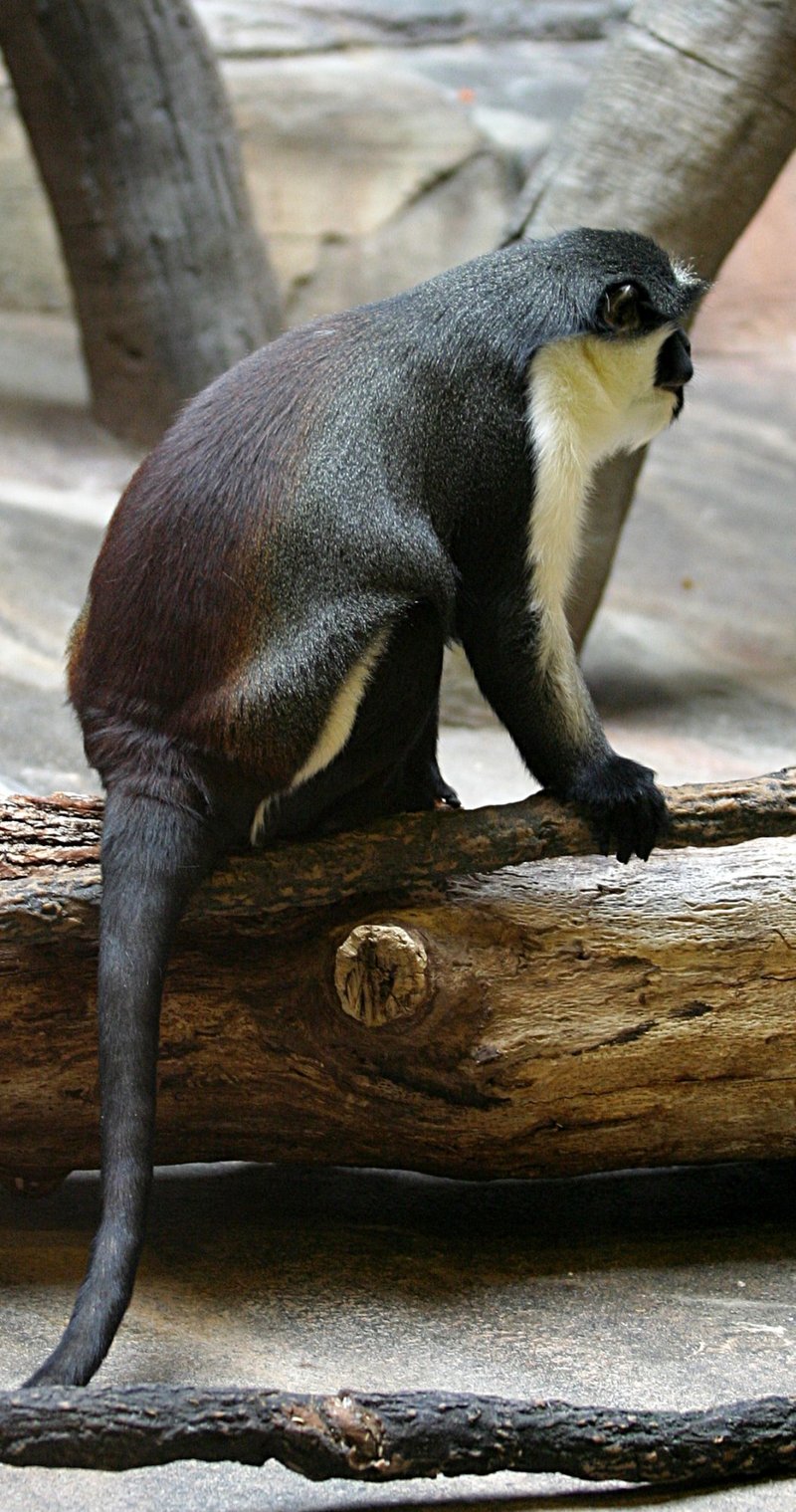Diana Monkey (Cercopithecus diana) - Wiki Diana Monkey
From Wikipedia, the free encyclopedia
[Photo] Diana Monkey at the Henry Doorly Zoo in Omaha, Nebraska. Date September 30, 2006. Author en:User:Cburnett http://en.wikipedia.org/wiki/User:Cburnett
The Diana Monkey (Cercopithecus diana) is often considered one of the most beautiful of the Old World monkeys. It is found in West Africa, from Sierra Leone to Ghana. Two geographical subspecies have recently been elevated to full species status; the Roloway Monkey (C. roloway) is found in C??te d'Ivoire and Ghana and the Dryas Monkey (C. dryas) found in the Congo Republic.
The Diana Monkey ranges from 40 to 55 cm in length, excluding its tail, which is of a uniform 3???4 cm diameter and 50???75 cm long. They are generally black or dark grey, but have a white throat, crescent-shaped browband, ruff and beard; the browband gave the species its common name, since it was held to resemble the bow of the goddess Diana. The monkeys' underarms are also white, and they have a white stripe down their thighs, while the backs of their thighs, and their lower backs, are a chestnut colour. Apart from the browband, ruff and beard, and some fringes on their limbs, their fur is short and sleek in appearance. Adults weigh between 4 and 7 kg.
The Diana Monkey is found in the primeval forests, and does not thrive in secondary forests. It is active during the day. It rarely comes down to the ground, but feeds at all levels of the canopy, retreating to the upper levels of the trees at night, though it does not make nests. Its marked coloration allows a wide range of visual social signals, and it also has a wide range of alarm calls, with different sounds for different predators; it is a noisy presence in the forest. It feeds mainly on fruit and insects, but will also take flowers, young leaves and invertebrates, and is in turn preyed on by Crowned Hawk-eagles, leopards, chimpanzees and humans. The monkey has distinctive alarm calls for different kinds of predators, and recent research has shown that other forest residents such as the Yellow-casqued Hornbill are able to discriminate these and take appropriate action (Rainey et al., 2004).
Individual Diana Monkeys may live for up to 20 years. Groups consist of a single male with a number of reproducing females and their infants. In good conditions, adult females reproduce annually. Gestation lasts about 5 months, and the young nurse for a further six months. Normally only a single infant is born. Although the young are born in a fairly well developed condition, with open eyes and able to grasp their mother, at least in zoo conditions Diana Monkey mothers appear anxious and possessive, rarely letting young infants leave them. As infants grow, however, they become very playful. Juveniles reach sexual maturity at an age of about 3 years. Daughters remain in their mothers' social groups, while males leave their natal groups shortly before attaining sexual maturity.
Like most primates, the Diana Monkey can carry diseases that can be communicated to humans, like yellow fever and tuberculosis, but they are not important carriers of these. It is regarded as endangered by the IUCN as well as by the United States Fish and Wildlife Service, the chief dangers to them being habitat destruction (they are now virtually confined to coastal areas) and hunting for bushmeat.
http://en.wikipedia.org/wiki/Diana_Monkey
| The text in this page is based on the copyrighted Wikipedia article shown in above URL. It is used under the GNU Free Documentation License. You may redistribute it, verbatim or modified, providing that you comply with the terms of the GFDL. |
